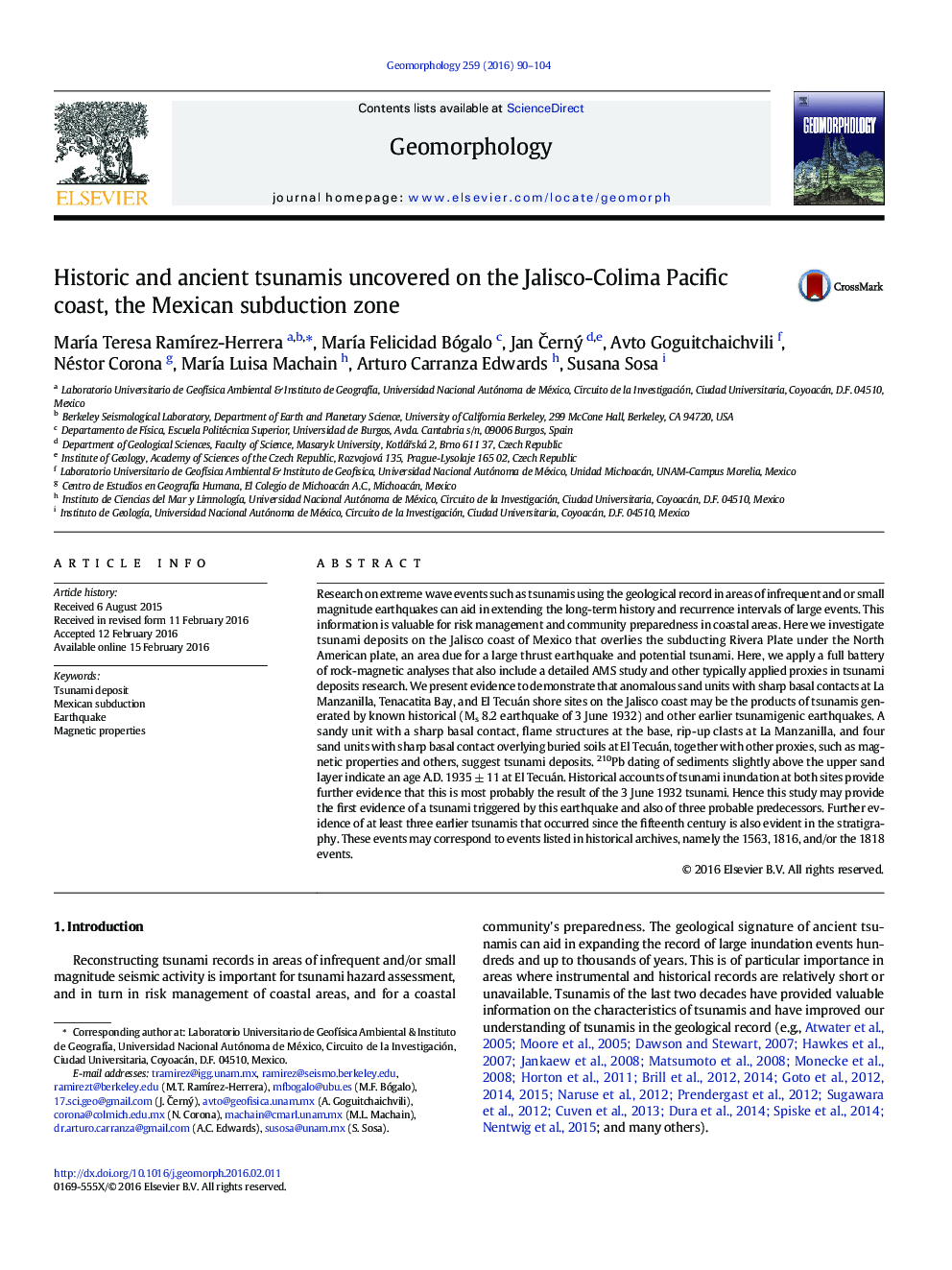| کد مقاله | کد نشریه | سال انتشار | مقاله انگلیسی | نسخه تمام متن |
|---|---|---|---|---|
| 6431622 | 1635390 | 2016 | 15 صفحه PDF | دانلود رایگان |
- We applied multiple proxies to reveal the occurrence of ancient tsunami deposits.
- We found geologic evidence of four possible tsunami events postdating the 1500's.
- Improving the earthquake and tsunami record reduces the hazard to coastal population.
Research on extreme wave events such as tsunamis using the geological record in areas of infrequent and or small magnitude earthquakes can aid in extending the long-term history and recurrence intervals of large events. This information is valuable for risk management and community preparedness in coastal areas. Here we investigate tsunami deposits on the Jalisco coast of Mexico that overlies the subducting Rivera Plate under the North American plate, an area due for a large thrust earthquake and potential tsunami. Here, we apply a full battery of rock-magnetic analyses that also include a detailed AMS study and other typically applied proxies in tsunami deposits research. We present evidence to demonstrate that anomalous sand units with sharp basal contacts at La Manzanilla, Tenacatita Bay, and El Tecuán shore sites on the Jalisco coast may be the products of tsunamis generated by known historical (Ms 8.2 earthquake of 3 June 1932) and other earlier tsunamigenic earthquakes. A sandy unit with a sharp basal contact, flame structures at the base, rip-up clasts at La Manzanilla, and four sand units with sharp basal contact overlying buried soils at El Tecuán, together with other proxies, such as magnetic properties and others, suggest tsunami deposits. 210Pb dating of sediments slightly above the upper sand layer indicate an age A.D. 1935 ± 11 at El Tecuán. Historical accounts of tsunami inundation at both sites provide further evidence that this is most probably the result of the 3 June 1932 tsunami. Hence this study may provide the first evidence of a tsunami triggered by this earthquake and also of three probable predecessors. Further evidence of at least three earlier tsunamis that occurred since the fifteenth century is also evident in the stratigraphy. These events may correspond to events listed in historical archives, namely the 1563, 1816, and/or the 1818 events.
Journal: Geomorphology - Volume 259, 15 April 2016, Pages 90-104
